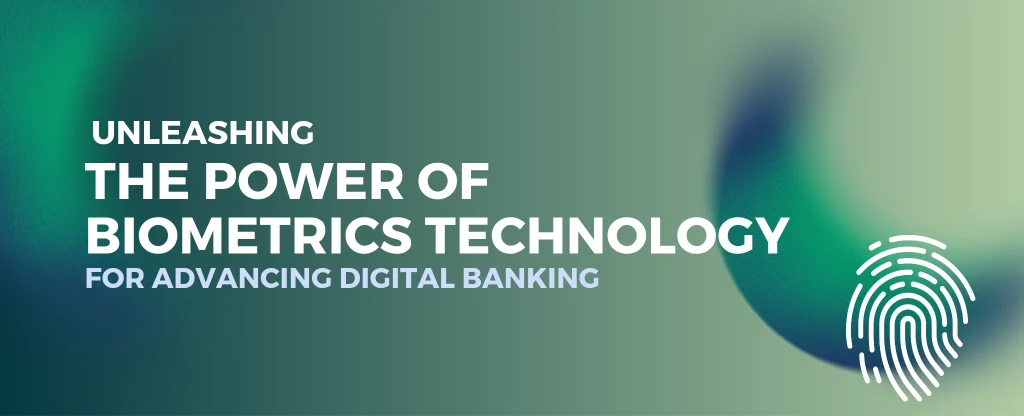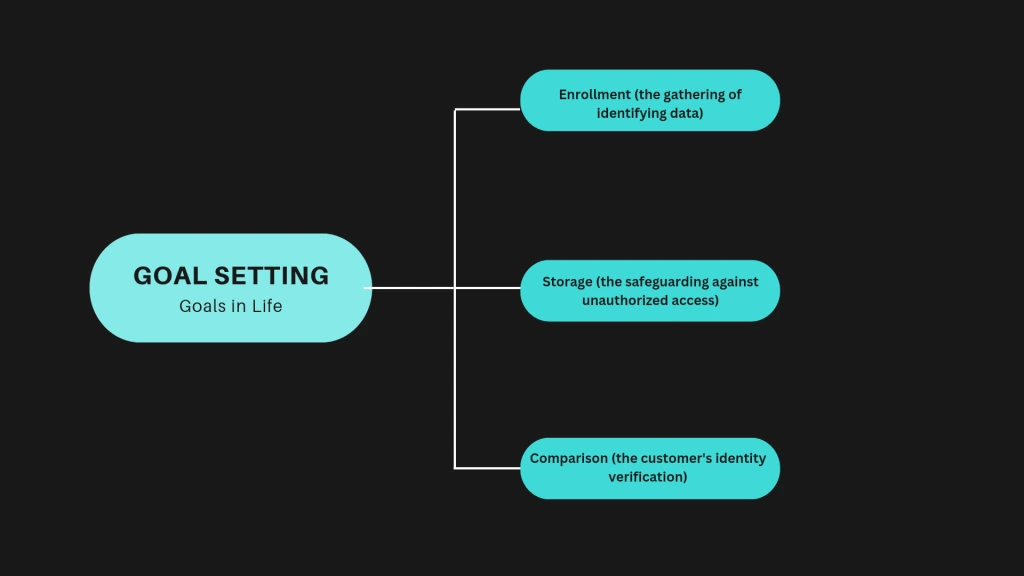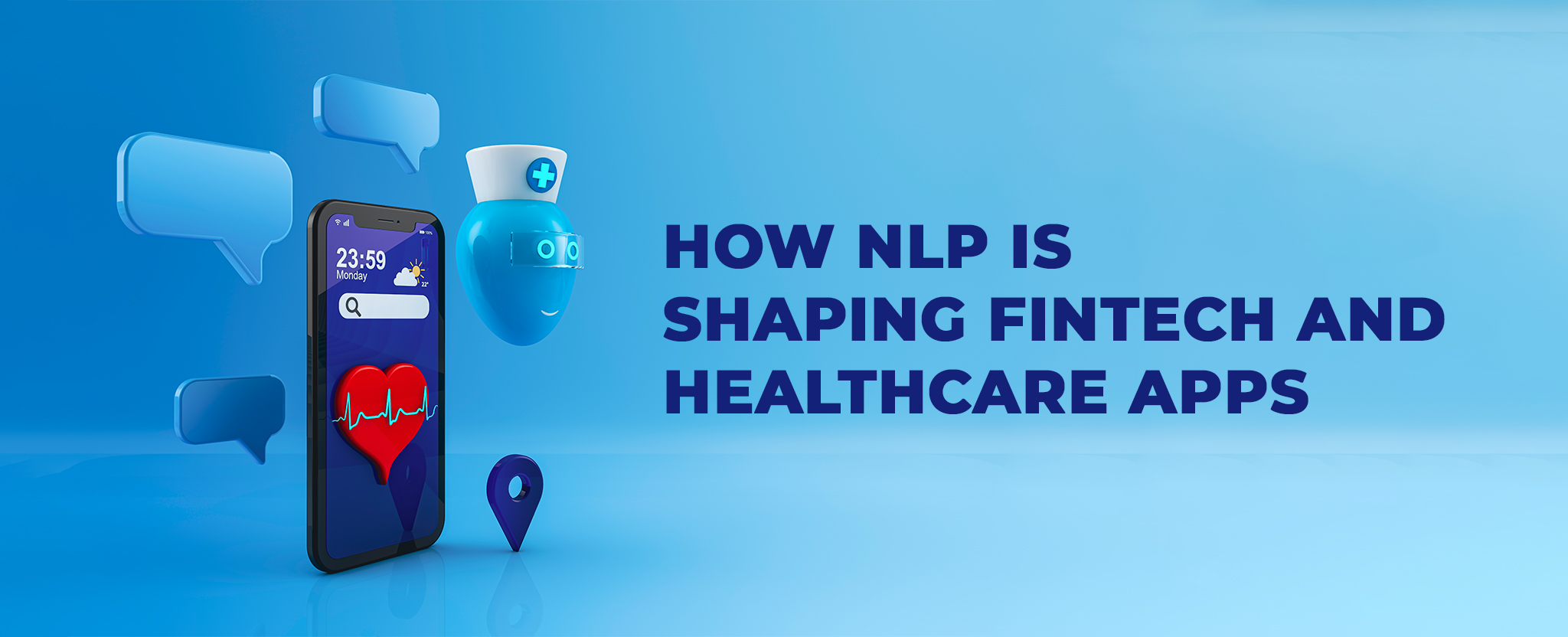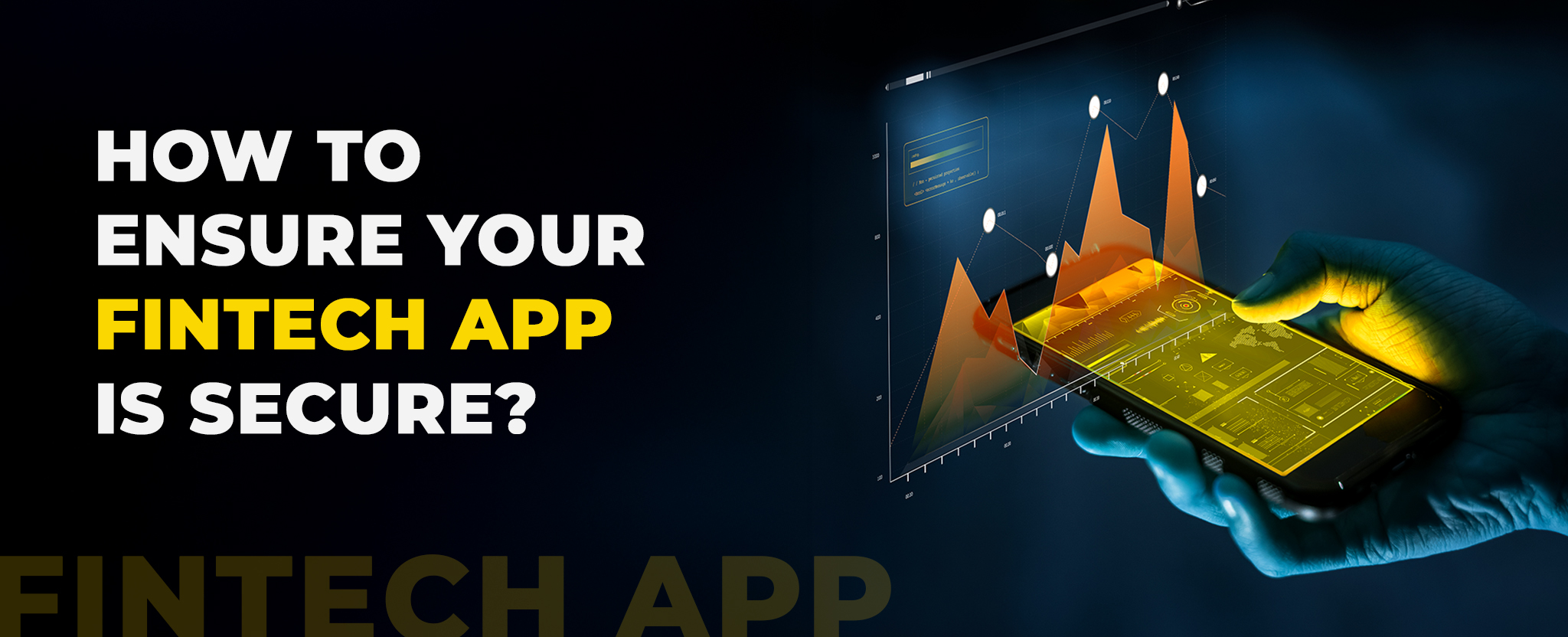Unleashing the Power of Biometrics Technology for Advancing Digital Banking
5 Jun 23 


As a significant stakeholder in financial transactions, have you ever noticed the paramount importance of biometric authentication in the digital banking era? The Biometrics Technology for advancing digital banking has therefore gained huge popularity. Security remains a top priority when it addresses finances, transactions, and banking matters. Several safety protocols have been adopted to guarantee that nothing illegal occurs.
In addition, the emerging technological advancements significantly impacted the fintech industry and innovated the entire banking system. This gave rise to the rapid and convenient banking transactions happening. The reason behind the fast and secure banking transactions was possible with the biometric authentication adopted by the fintech industries. So let’s dive deep into the importance of biometric authentication and how it transforms digital payments in the banking industry.
What is Biometric Authentication?
Biometric authentication is a widely known security metric. It uses a user’s biometric features (face, palm print, fingerprint, iris, and voice) to verify a person’s identity attempting to access an authorized device. An individual’s biometric features are compared with the authorized features stored in the database.
Biometric authentication is successful when the biometric features, such as fingerprint or iris recognition, of the user, are compared and matched with the biometric database. When this is successful, the user can function with the device.

The application and benefits of biometric authentication have significantly grown during the past few years, as it has easy integration with smartphones, user gadgets, and computers. As a result, biometric Biometrics Technology for advancing digital banking has been widely accepted and used.
For instance, the government and private organizations use this feature to secure airports, military bases, and entry points to national borders. This also applies to the physical environment for controlling the access points of gates and doors.
Working of Biometric Technology in Digital Banks
Digital identity identification and authorization are made possible by advanced biometric safety technologies. They use specialized scanners, which can be small or massive depending on the sort of data needed, and specific software to process the data that has been acquired.
A scanner collects biometric data, transforms it into a digital format, and compares it to an already-existing database to begin the process. If the samples match, the user is given access; otherwise, access is refused, or the proper notification is provided to a system operator.
Replacing passwords with some biometric security features renders passwords obsolete. In conclusion, three phases are required for the effective deployment of biometric systems:
- Enrollment (the gathering of identifying data)
- Storage (the safeguarding against unauthorized access)
- Comparison (the customer’s identity verification)

Due to biometric technology, banking activities are much safer and significantly easier for clients.
Advantages of Biometric Technology in Banks
Digital shopping evolved as the next era after the digital banking era. One of the crucial roles played in this area was Apple in 2014, with the launch of Apple Pay. Most researchers found it to be less relevant. However, Biometrics Technology for advancing digital banking has transformed the banking services. When consumers are provided with smartphone integration while purchasing, they love it.
The transition impact was huge! The safe and rapid mobile banking experience is transformed into a safe and comfortable mobile shopping experience. So early, tech giants such as Samsung and Google followed the paths of Samsung Pay and Android Pay. The mobile payment platform was built with iris scanning by Samsung as the core part.
They provided the customers with an intuitive experience as they could access payments by gazing at their phones. On the contrary, Android Pay did not demand biometric authentication. However, most Android phones reinforce this feature. The significant benefits or advantages of biometric technology in the banking sector include the following

Enhanced Safety
Mobile banking apps that use biometric authentication offer a safe, dependable way to conduct financial transactions. Since it provides robust protection against fraud or incorrect access attempts, this approach is a desirable replacement for usernames and PINs. Additionally, it is hard to replicate biometric characteristics digitally, resulting in a setting with increased security for users’ bank accounts.
Improved Operational Efficiency
Users can benefit significantly from using biometrics instead of conventional banking procedures regarding time savings. In addition, banks that use these authentication methods can also reduce the requirement for human checks and examinations, improving their operational effectiveness.
Greater Accessibility
Compared to conventional passwords and physical security keys, mobile banking’s use of biometric authentication provides users with a more practical option. Instead, clients may swiftly and easily access their accounts using their fingerprints, faces, or voices. This eliminates the need to memorize complicated passwords or the dangers associated with misplacing physical security keys.
Reduced Scam
In banking, biometric technology provides a strong defense against illegal behaviors like stolen identities or the hijacking of accounts. It operates by looking for irregularities in user behavior or biometric characteristics that could point to fraudulent activity. Banks notified of such incidents may respond quickly to limit any possible losses.
Biometric Technology for Advancing Digital Banking
Using biometric technologies for payment and money transfer processes has become increasingly common as smartphone usage for banking and shopping has increased dramatically. As per Juniper’s research, by 2027, mobile biometrics up from 332 billion in 2022 will validate remote payments totaling 1.2 trillion dollars.
The analysis also showed that over the next five years, there would be a 383% increase in biometrically validated remote mobile payments. Additionally, facial recognition is paramount in biometric authentication for mobile payments. This points out that OEM-Pay solutions use facial recognition features to provide a flawless checkout experience for the users.
Biometric Technology for Advancing Digital Banking through Safety and Convenience
When Apple began including fingerprint sensors on their devices, it generated a lot of excitement. Later, several more businesses used this technique. Fintech app developers quickly rushed in and developed biometric logins for their banking apps to use this innovation. Nearly every one of the top financial institutions implemented fingerprint login and enabled the extra.
A further innovation financial service companies have used for user login is Samsung’s iris scanning technology. Apple also unveiled the technology known as Face ID. It is an infrared face recognition technology bank used in Singapore, including OCBC and HSBC.
Biometric Technology for Advancing Digital Banking through Employing Multi-Factor Authentication
Fraud activities are higher among users having passwords and PINs. The aforementioned is one of the most significant reasons for adopting steps to safeguard your online payment system. This points to the deployment of biometric technologies into the banking systems.
This demanded organizations use Multi-Factor Authentication (MFA). MFA integrated fingerprint technology with voice, facial recognition, or retina. It is highly protected, making it much more complicated for hackers to steal customer accounts.
This particular security measure uses information about and characteristics of the consumer. Before physical logins became obsolete, banks combined PINs and passwords with biometric identification in mobile banking for two-factor authentication. Biometrics Technology for advancing digital banking is therefore improved through Multi-Factor Authentication (MFA).
Biometric Technology for Advancing Digital Banking through Biometric Card Payments
Card Payments are also benefited from biometric technology. In many regions of the globe, the present card payment method swiping your card at a terminal is gradually becoming outdated. In Canada and Europe, chip-enabled cards are commonly used, yet, they take a lot of time because the user must input the PIN during several transactions.
NFC transactions, which require users to tap their card on the terminal, are also supported by chip cards. Comparing this approach to the previously stated other card payment options, it is relatively easy and rapid. However, there’s no demand for a PIN or signature, so it carries certain privacy dangers. Biometric payment cards play a role in this situation. These cards have biometric authentication and tap-and-go payment functionality.
When purchasing, a cardholder must only register one’s fingerprint on the sensor. Significant companies like Mastercard and Visa are researching large-scale implementations of biometrics technology for advancing digital banking technology with their financial industry partners. It implies that soon customers from across the globe will be able to use their cell phones to make transactions in the safest, quickest, and most efficient way possible.
Challenges of Integrating Biometric Technology for Advancing Digital Banking
While compared to other identification methods, biometrics in financial systems provide a greater level of security, vulnerabilities still exist. Hackers are skilled at devising strategies to fool biometric scanning technology, such as building 3D models from public images of individuals and using sophisticated counterfeits.
Furthermore, extra precautions like using cloud computing for banks should be taken to safeguard it because the software that powers biometric devices collects and saves sensitive user data. For instance, the digital fingerprints of 5.6 million employees were taken from the US government’s servers in 2015 when it was breached. Therefore, the best strategy is to combine biometric technology with other types of security.
Ways to Improve Biometric Technology for Advancing Digital Banking
Vulnerability is a concern with biometric authentication systems that have to be resolved. Fortunately, there are reliable methods you may use to guard against scams and intrusions. These include leveraging cloud-based storage, demanding various verification forms, and working with an expert software development firm.
For maximum protection, iris scans and fingerprints are frequently an excellent combination. Working with a provider who secures and saves data in the cloud will also stop unauthorized access. And last, hiring specialists in this field can significantly lower the likelihood of errors.
Mindster’s Biometric Technology for Advancing Digital Banking & Fintech Apps
Using biometrics technology for advancing digital banking, shows how banks and other financial service providers conduct business in decades to come. For example, biometrics in digital banking can be a helpful answer if you’re seeking new ways to rapidly and effectively assist customers in confirming their identity.
Mindster has collaborated with several fintech businesses and prominent international organizations to provide our customers with exquisite fintech app development services. One of our notable fintech apps is ONEIC, which uses biometric authentication. Implementing such a strategy calls for a high level of technological proficiency. At Mindster, we offer qualified, specialized solutions to assist organizations in incorporating biometric technology into their company’s operations and reaping its advantages.
If you are interested to contact us, Follow us at: https://mindster.com/
- Android Development3
- Artificial Intelligence24
- Classified App1
- Custom App Development2
- Digital Transformation10
- Doctor Appointment Booking App11
- Dropshipping1
- Ecommerce Apps38
- Education Apps2
- Fintech-Apps34
- Fitness App2
- Flutter3
- Flutter Apps19
- Food Delivery App5
- Grocery App Development1
- Grocery Apps3
- Health Care6
- IoT2
- Loyalty Programs8
- Microsoft1
- Mobile App Maintenance1
- Mobile Apps119
- Product Engineering3
- Progressive Web Apps1
- Saas Application2
- Shopify6
- Software Development1
- Taxi Booking Apps7
- Truck Booking App5
- UI UX Design8
- Uncategorized5
- Web App Development1



















Comments